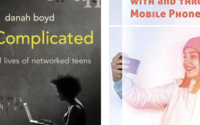Common Rule Vulnerabilities: Practices, Pedagogies, and Effective Public Deliberative Rhetoric
The Common Rule, published in 1991, is the federal policy that governs research with human participants at federally funded organizations. It mandates and provides guidance for Institutional Review Boards (IRBs) and is based on the three foundational, complex ethical principles explicated in the Belmont Report: autonomy, beneficence, and justice. On January 21, 2019, a revised version of the Common Rule was implemented. These revisions matter to public rhetoric and writing studies scholars and teachers for two significant reasons.
First, regardless of our paradigmatic approach, methodological and ontological commitments, or our selected methods, research we do with human participants is moderated by IRB review. Scholars in rhetoric and writing studies have examined the impact of IRBs (Barton) and offered recommendations for engaging in the review process (McKee, “Changing the Process”). Anderson, McKee (“Ethical and Legal Issues”), McKee and Porter, and McKee and DeVoss provided the field of writing studies with necessary frameworks to examine the impact of the Common Rule on our research. And from an anthropological perspective, Stark observed that IRBs change what is knowable because they review hypothetical research proposals and sanction them for tangible inquiry (5). This impacts the human-focused exploration in rhetoric and writing studies. As Bazerman suggests, the field’s “motive comes from helping people to use written language more effectively, for both production and reception” (14). Determining whether the field does this well involves research with human participants.
Second, by examining a small section of a major federal policy revision, we can learn to amplify our own voices in the policy process and thereby teach others to do so as well. As we teach deliberative and engaged rhetoric, we can use this case as an exhibit for students. The revisions to the Common Rule illustrate how publicly engaged rhetoricians can negotiate the policy process and help undo decades of systematic marginalization—marginalization that has occurred as a direct result of language. By conducting robust, ethical research ourselves, as well as teaching our students how to look for, engage with, and constructively critique public policy at opportune moments, we can participate more effectively in public deliberative rhetoric.
Context: Agency and Revisions to the Common Rule
Multidisciplinary critiques of how federal policy directly and concretely shapes the treatment of bodies have exploded in recent years (Childress and Thomas; Ruof). In rhetoric, efforts to (re)distribute agency (e.g., Shirley and Colton; Hallenbeck; Rivers) and transfer power (Ackerman and Coogan; Cagle; Alexander and Jarratt) are increasingly represented in our public projects. As this scholarship in rhetoric and writing studies evolved, the Common Rule concurrently underwent considerable revision.
In 2011 an Advanced Notice of Proposed Rulemaking suggested initial revisions to the then-20-year-old Common Rule. Four years later, a Notice of Proposed Rulemaking was released for public comment. Comments were accepted from late 2015 through early 2016. Card notes that the comment period on public dockets like these are an interesting site of study; like Card, I aim to usefully illustrate the public’s engagement in the policy process. Specifically, I exhibit how productive change to this policy was possible in part because of this comment process.
The revised Common Rule was published in January 2017 and implemented in January 2019. Policy makers suggest these updates “more thoroughly address the broader types of research conducted or otherwise supported by all of the Common Rule departments and agencies such as behavioral and social science research” (Federal Register 7152). While there are many updates to the rule that will impact our research, I want to focus specifically here on the revision of the designations “vulnerable” and “vulnerable populations.”
Critiques of the Original Definition of “Vulnerable Populations”
Under the auspices of the original Common Rule, IRBs were required to be “particularly cognizant of the special problems of research involving vulnerable populations, such as children, prisoners, pregnant women, mentally disabled persons, or economically or educationally disadvantaged persons.” In a later section of the policy (§ 46.107) “handicapped individuals” are classified as a vulnerable population, too. I focus specifically on the original categorization of pregnant women and “handicapped individuals” as vulnerable because the continued protections of children, prisoners, and economically and educationally disadvantaged persons remain appropriate in our current research contexts.
Early critics argued that identifying folx as vulnerable, especially pregnant women and “handicapped individuals,” foregrounded bodily agency. Pregnant women (not persons) and “handicapped individuals” were “protected” by the policy, regardless of their own perceptions of their bodily autonomy. Whether they were deemed vulnerable in their body’s best interest, or due to, for instance, a fetus they carried, the categorization was, rather than protectionary, in fact exclusionary. Moreover, these populations were regularly excluded from research because of their protected status (Childress and Thomas; Mastroianni et al.).
Alongside critiques levied against the policy and IRBs generally from humanistic, anthropological, and clinical perspectives (Schrag; Stark; Schneider; Klitzman), bioethics researchers (Levine et al.; Krubiner and Faden) noted the original Common Rule’s framing of vulnerability was ableist and paternalistic. Pregnant and “handicapped” populations originally identified as vulnerable suffered from stereotyping and further marginalization by their categorization in policy (Ruof). If populations, by law, require added protections, their enrollment in research is often limited for bureaucratic reasons. As a result, those individuals are not part of the broader population to which findings and results are intended to generalize (Seto).
Contentious conversations in the social sciences regarding replicability (Tackett et al.) and generalizability (Heinrich et al.) are bleeding into our own empirical methods, given our adopted approaches from these disciplines (Schell and Rawson; Nickoson and Sheridan). We must diversify our research populations, ensuring they are appropriately selected from the spectrum of our “WEIRD” society (Western, educated, industrialized, rich, and democratic) to answer compelling questions about our diverse communities of practice. Enrolling only the majority population (categorized by race, ethnicity, sexuality, etc.) and systematically excluding certain populations makes this impossible.
Quite simply: expecting findings to apply to the broader population, when parts of that population are actively protected for noncredible reasons, can be a violation of the principle of beneficence. This foundational principle of the Common Rule (along with autonomy and justice, from the Belmont Report) ensures that participants’ contribution to research offers findings that apply broadly across the population (Mastroianni et al.). This, perhaps, was the deepest issue with categorizing vulnerability by bodily characteristics such as pregnancy or disability. It marginalized specific types of bodies and sanctioned research that generated findings that did not apply to the persons who inhabited such bodies. The 1991 definition of vulnerability that included pregnant women and “handicapped individuals” was exclusionary rather than protectionive.
Modernizing the Definition of “Vulnerability”
Imbued in policy language regarding vulnerability are issues of access and agency. Who receives cutting edge, experimental medical treatment? Who is considered autonomous? What sort of care and treatment under the guise of “protections” are afforded to human participants in research? Individuals considered “vulnerable” are subject to exclusion from research. Even if they are necessary or important populations to involve in research, some individuals with autonomous decision-making capabilities (e.g., pregnant persons and those with physical disabilities) were limited in their ability to participate because of ableist, sexist language in federal law.
The original definitions of “vulnerability” in the 1991 Common Rule exhibit how language has shaped the treatment of bodies and how institutions like the federal government and their proxies in research—e.g., Institutional Review Boards, federally funded universities, and medical establishments— shape the treatment of bodies and exercise power through language. Examining the late stages of the policy revision process provide insight for the public. Specifically, we can observe some tools in action during the policy revision process to better understand how we can ensure our agency is honored in the policy making and remaking process. This affords us the crucial opportunity to participate in policy building that is more socially just—and, in this example, honors the agency of individuals without regard to the physical bodies they happen to inhabit.
In 2019, the updated Common Rule was implemented. Below is a visual representation of the changes between the 1991 policy and the current policy. The original 1991 policy is in standard type. The content in parentheses has been removed. The content in bold has been added:
…the IRB should take into account the purposes of the research and the setting in which the research will be conducted (
and). The IRB should be particularly cognizant of the special problems of research(involving) that involves a category of subjects who are vulnerable (populations) to coercion or undue influence, such as children, prisoners, (pregnant women, mentally disabled persons) individuals with impaired decision-making capacity, or economically or educationally disadvantaged persons.
The newly implemented rule is, therefore, quite different from the original. This is one small example of definitional work in a sea of major policy revisions. The change moves agency away from bodies to the persons that inhabit them. In theory, this recognizes that enacted policy had disadvantaged these populations in the research process. In practice, the updated policy allows IRBs and researchers greater opportunity to better honor the social and local contexts that systematized oppression. The policy now better associates appropriate protections with certain bodies.
Public Deliberative Rhetoric and Federal Policy Revision
Countless mechanisms impact policy implementation and revision. When federal policy is undergoing revision, often in the form of Notices of Proposed Rulemaking (NPRM), lawmakers are required by the Administrative Procedures Act to read and engage with pertinent comments submitted during the assigned comment period. For this reason, when federal policy is undergoing revision, it is crucial that stakeholders engage in the public comment process.
When the NPRM was published September 8, 2015, the public was asked to read and comprehend a 129-page document; nested within this document were the outline of proposed changes along with 87 “Questions for Public Comment.” These were sprinkled throughout the document, associated with their target revision recommendations. The comment period was open September 24, 2015 through January 6, 2016. Of the 2,189 comments left on the docket, 76 mentioned “vulnerability” (3.5% of the total comments). Regarding the updates to issues of vulnerability, the public was asked to comment on two questions: Questions 82 and 83.
Is the §ll.111(a)(3) and (b) focus on issues related to coercion or undue influence in research with vulnerable populations, and not other considerations related to vulnerability, appropriate? … §ll.107(a). and Should pregnant women and those with physical disabilities be included in the category of subpopulations that may be vulnerable to coercion or undue influence?
Some comments directly responded to the questions posed in the NPRM. Some comments articulated scholarly critiques. And some of the most striking open-ended comments noted the inherent contradiction in the tenet of autonomy (respect for persons) and the labeling of certain bodies as vulnerable due to physical characteristics that may not, in fact, define someone. Indeed, defining a person only by their body’s characteristics limits researchers’ and IRB’s abilities to honor that person’s autonomy.
In the revised Common Rule, policy makers recognized those reasoned voices that pointed out inherent contradictions in the original policy. While a proportionally small percentage of comments addressed vulnerability, the consistent, reasoned critique presented by the public ensured that not only were the proposed changes made to remove pregnancy as a vulnerability, but the proposed verbiage regarding “physical disability” was not included in the final rule. Public comment on the proposed revision changed the shape of the final policy to ensure that individuals with physical disabilities are better able to advocate for their own autonomy.
Researching and Teaching Beyond Vulnerability
These changes are certainly a move in the right direction; they also suggest two major recommendations for our practice. The first recommendation relates to research conducted with human participants. The second relates to the teaching of civic engagement and public rhetorics.
First, given our evolving and expanding empirical practices (e.g., Barton; Johanek; Haswell; Driscoll) and research with human participants, this policy change has tangible impacts on our work. As IRBs adapt to the new Common Rule, we can expect to navigate a changed landscape as our research winds its way through IRB review. The federal regulations related to the definition of “vulnerability” and “vulnerable populations” have ensured that local IRBs have significantly more control over the designations of who is vulnerable. As we continue to practice public engagement, it is crucial to represent our prospective research populations accurately—as our participants would represent themselves—to ensure our IRBs recognize both the autonomy of prospective participants, as well as potential pressures they may face to participate.1
Second, we can be attuned to, and teach students to recognize, these moments and spaces for invention and intervention. Having students examine and critique policies undergoing active revision affords rhetoric scholars an opening to discuss methods and means to advance social change. In doing so, we counteract the tendency to be armchair justice advocates with practicable, actionable work with words. For instance, having students prepare a comment for an open public docket affords them the opportunity to manifest critiques and see them published for public consumption. Moreover, asking students to write for such an audience and purpose offers them skills for active citizenship. Involving students in the policy process, and in public rhetoric, is an effective manifestation of our field’s concerns related to justice and equity.
In this single example, a mere ~40 words of a major federal policy changed the face of research ethics. In part, it was the result of comments registered on the public docket. Those voices that were honored were those of respondents who addressed the federal government’s direct questions and provided reasoned, critical feedback. It is a moment to be hopeful; these updates better honor the agency of prospective participants’—especially individuals whose bodies resulted in categorizations in policy that they may not have applied to themselves. That the public had a role to play in the policy revision process, as exhibited in this case, suggests public engagement in policy making can be informative for our pedagogy and research.
Endnotes
- Such an undertaking requires considerable effort. This is an incredibly complex issue and process, and one’s approach depends on one’s paradigm. I subscribe to Mertens’s transformative paradigm, and the axiological, ontological, epistemological, and methodological commitments of this paradigm, which demands that I involve prospective participants in my research inception, design, and dissemination process. This affords us the opportunity to accurately identify their preferences before we engage with the IRB. return
Works Cited
Ackerman, John M., and David J. Coogan, eds. The Public Work of Rhetoric: Citizen-Scholars and Civic Engagement. University of South Carolina Press, 2013.
Alexander, Jonathan, and Susan C. Jarratt. “Rhetorical Education and Student Activism.” College English vol. 76, no. 6, 2014, pp. 525–544.
Anderson, Paul V. “Ethics, Institutional Review Boards, and the Involvement of Human Participants in Composition Research.” Ethics and Representation in Qualitative Studies of Literacy, edited by Paul Mortensen and Gesa E. Kirsch, National Council of Teachers of English, 1996, pp. 260-285.
Anderson, Paul V. “Simple Gifts: Ethical Issues in the Conduct of Person-Based Composition Research.” College Composition and Communication, vol. 49, no. 1, 1998, pp. 63–89.
Barton, Ellen. “Further Contributions from the Ethical Turn in Composition/Rhetoric: Analyzing Ethics in Interaction.” College Composition and Communication, vol. 59, no. 4, 2008, pp. 596–632.
Barton, Ellen. “More Methodological Matters: Against Negative Argumentation.” College Composition and Communication, vol. 51, no. 3, 2000, pp. 399–416. JSTOR, doi:10.2307/358742.
Bazerman, Charles. “Standpoints: The Disciplined Interdisciplinarity of Writing Studies.” Research in the Teaching of English, vol. 46, no. 1, Aug. 2011, pp. 8–21.
Card, Daniel J. “Off-Target Impacts: Tracing Public Participation in Policy Making for Agricultural Biotechnology.” Journal of Business and Technical Communication, vol. 34, no. 1, Sept. 2019, pp. 77–103. SAGE Journals, doi:10.1177/1050651919874114.
Cagle, Lauren E. “Becoming “Forces of Change”: Making a Case for Engaged Rhetoric of Science, Technology, Engineering, and Medicine.” Poroi, vol. 12 no. 2, 2017, pp. 1–13.
Childress, Andrew M., and Christopher R. Thomas. “Navigating the Perfect Storm: Ethical Guidance for Conducting Research Involving Participants with Multiple Vulnerabilities.” Kennedy Institute of Ethics Journal, vol. 28, no. 4, 2018, pp. 451–478.
Driscoll, Dana Lynn. “Composition Studies, Professional Writing and Empirical Research: A Skeptical View.” Journal of Technical Writing and Communication, vol. 39, no. 2, 2009, pp. 195–205.
“Federal Policy for the Protection of Human Subjects (Revised Common Rule).” Federal Register, vol. 82, no. 12, 2017, pp. 7149– 7274. https://www.govinfo.gov/content/pkg/FR-2017-01-19/pdf/2017-01058.pdf
Hallenbeck, Sarah. “Toward a Posthuman Perspective: Feminist Rhetorical Methodologies and Everyday Practices.”Advances in the History of Rhetoric, vol. 15, no. 1, 2012, pp. 9–27.
Haswell, Richard H. “NCTE/CCCC’s Recent War on Scholarship.” Written Communication, vol. 22, no. 2, 2005, pp. 198–223.
Henrich, Joseph, Steven J. Heine, and Ara Norenzayan. “Most People are Not WEIRD.” Nature, vol. 466, no. 7302, 2010, p 29.
Johanek, Cindy. Composing Research: A Contextualist Paradigm for Rhetoric and Composition. Utah State University Press, 2000. DOI.org (Crossref), doi:10.2307/j.ctt46nrtw.
Juzwik, Mary M., et al. “Writing into the 21st Century: An Overview of Research on Writing, 1999 to 2004.” Written Communication, vol. 23, no. 4, 2006, pp. 451–476.
Krubiner, Carleigh B., and Ruth R. Faden. “Pregnant Women Should Not be Categorised as a ‘Vulnerable Population’ in Biomedical Research Studies: Ending a Vicious Cycle of ‘Vulnerability’.” Journal of Medical Ethics, vol. 43, 2017, pp. 664–665.
Levine, Carol, et al. “The Limitations of “Vulnerability” as a Protection for Human Research Participants.” The American Journal of Bioethics, vol. 4, no. 3, 2004, pp. 44–49.
Mastroianni, Anna C., Ruth Faden, and Daniel Federman, eds. Women and Health Research: Ethical and Legal Issues of Including Women in Clinical Studies, Vol. 1. National Academies Press, 1994.
McKee, Heidi A. “Changing the Process of Institutional Review Board Compliance.” College Composition and Communication, vol. 54, no. 3, 2003, pp. 488–493.
McKee, Heidi A. “Ethical and legal issues for writing researchers in an age of media convergence.” Computers and Composition, vol. 25, no. 1, 2008, pp. 104–122.
McKee, Heidi A., and Danielle DeVoss. Digital Writing Research: Technologies, Methodologies and Ethical Issues. Cresskill, NJ: Hampton Press, 2007.
McKee, Heidi A., and James E. Porter. “The Ethics of Digital Writing Research: A Rhetorical Approach.” College Composition and Communication, vol. 59, no. 4, 2008, pp. 711–749.
McKee, Heidi A., and James E. Porter. The Ethics of Internet Research: A Rhetorical, Case-Based Process. Peter Lang, 2009.
Nickoson, Lee and Mary P. Sheridan. Writing Studies Research in Practice: Methods and Methodologies. SIU Press, 2012.
“Notice of Proposed Rulemaking.” Federal Register, vol. 80, no. 173., pp. 53933–54061. https://www.govinfo.gov/content/pkg/FR-2015-09-08/pdf/2015-21756.pdf
Rivers, Nathaniel. “Tracing the Missing Masses: Vibrancy, Symmetry, and Public Rhetoric Pedagogy.” Enculturation, vol. 17, 2014. http://enculturation.net/missingmasses
Ruof, Mary C. “Vulnerability, Vulnerable Populations, and Policy.” Kennedy Institute of Ethics Journal, vol. 14, no. 4, 2004, pp. 411–425.
Schell, Eileen E., and Kelly Jacob Rawson, eds. Rhetorica in Motion: Feminist Rhetorical Methods and Methodologies. University of Pittsburgh Press, 2010.
Seto, Belinda. “History of Medical Ethics and Perspectives on Disparities in Minority Recruitment and Involvement in Health Research.” The American Journal of the Medical Sciences, vol. 322, no. 5, 2001, pp. 246–250.
Shirley, Beth, and Jared S. Colton. “Attributing Agency to Nonhumans: What Can Horse ebooks Tell Us About Rhetorical Agency?.” Present Tense, vol. 6, no. 1, 2016. http://www.presenttensejournal.org/volume-6/the-moral-act-of-attributing-agency-to-nonhumans/
Stark, Laura. Behind Closed Doors: IRBs and the Making of Ethical Research. The University of Chicago Press, 2012.
Teston, Christa, and S. Scott Graham. “Stasis Theory and Meaningful Public Participation in Pharmaceutical Policy.” Present Tense: A Journal of Rhetoric in Society, vol. 2, no. 2, 2012. https://www.presenttensejournal.org/volume-2/stasis-theory-and-meaningful-public-participation-in-pharmaceutical-policy-making/
Tackett, Jennifer L., et al. “It’s Time to Broaden the Replicability Conversation: Thoughts for and from Clinical Psychological Science.” Perspectives on Psychological Science, vol. 12, no. 5, 2017, pp. 742–756.
KEYWORDS: Common Rule, IRB, research ethics, vulnerability, public policy
COVER IMAGE CREDIT: Author




 Johanna Phelps, PhD, MPA is an Assistant Professor of English and Director of Technical and Professional Writing at Washington State University Vancouver. Her goal in researching federal policy, institutional infrastructures, and community engagement practices is to advance equity and expand opportunity structures in pursuit of a more just society.
Johanna Phelps, PhD, MPA is an Assistant Professor of English and Director of Technical and Professional Writing at Washington State University Vancouver. Her goal in researching federal policy, institutional infrastructures, and community engagement practices is to advance equity and expand opportunity structures in pursuit of a more just society.